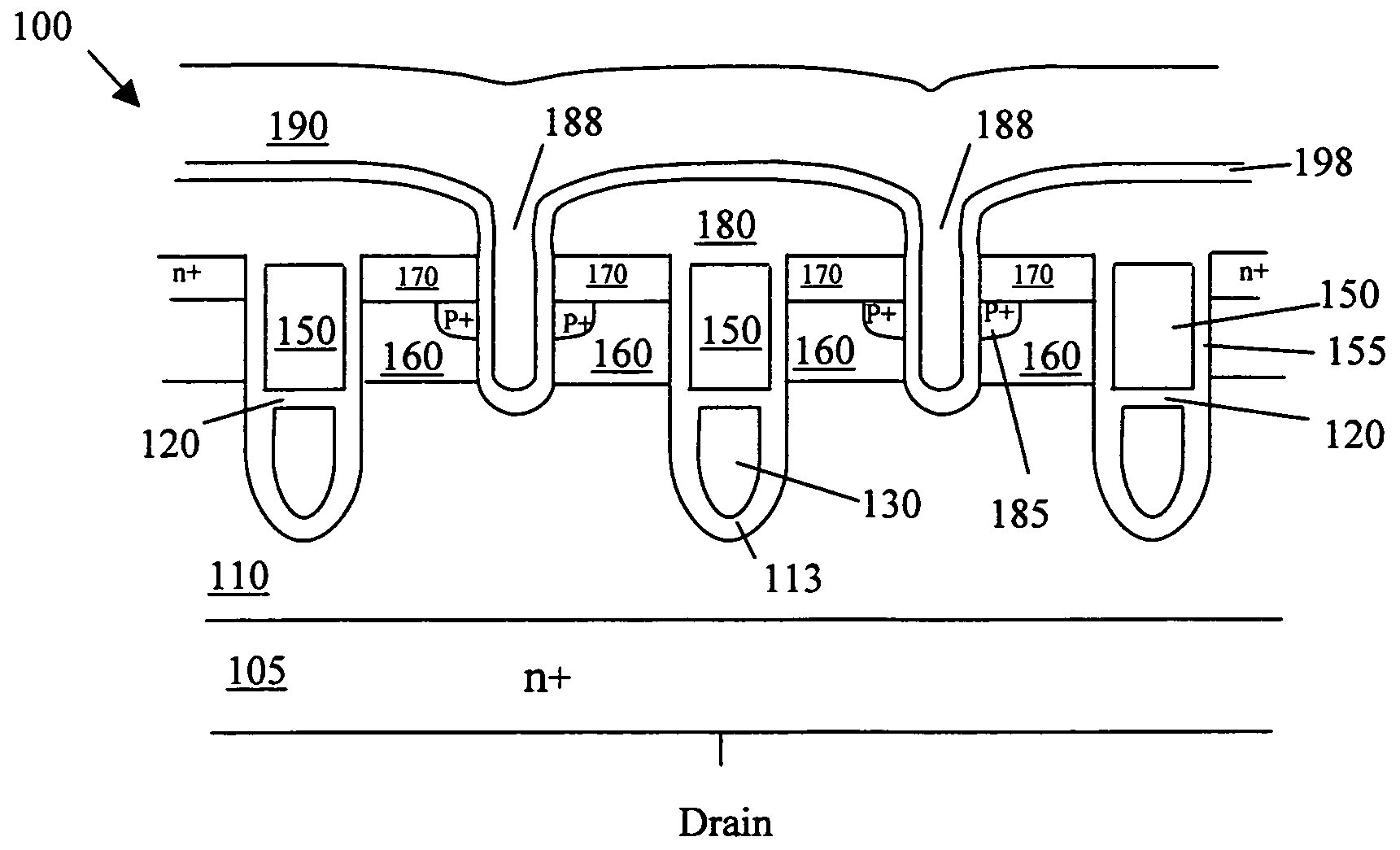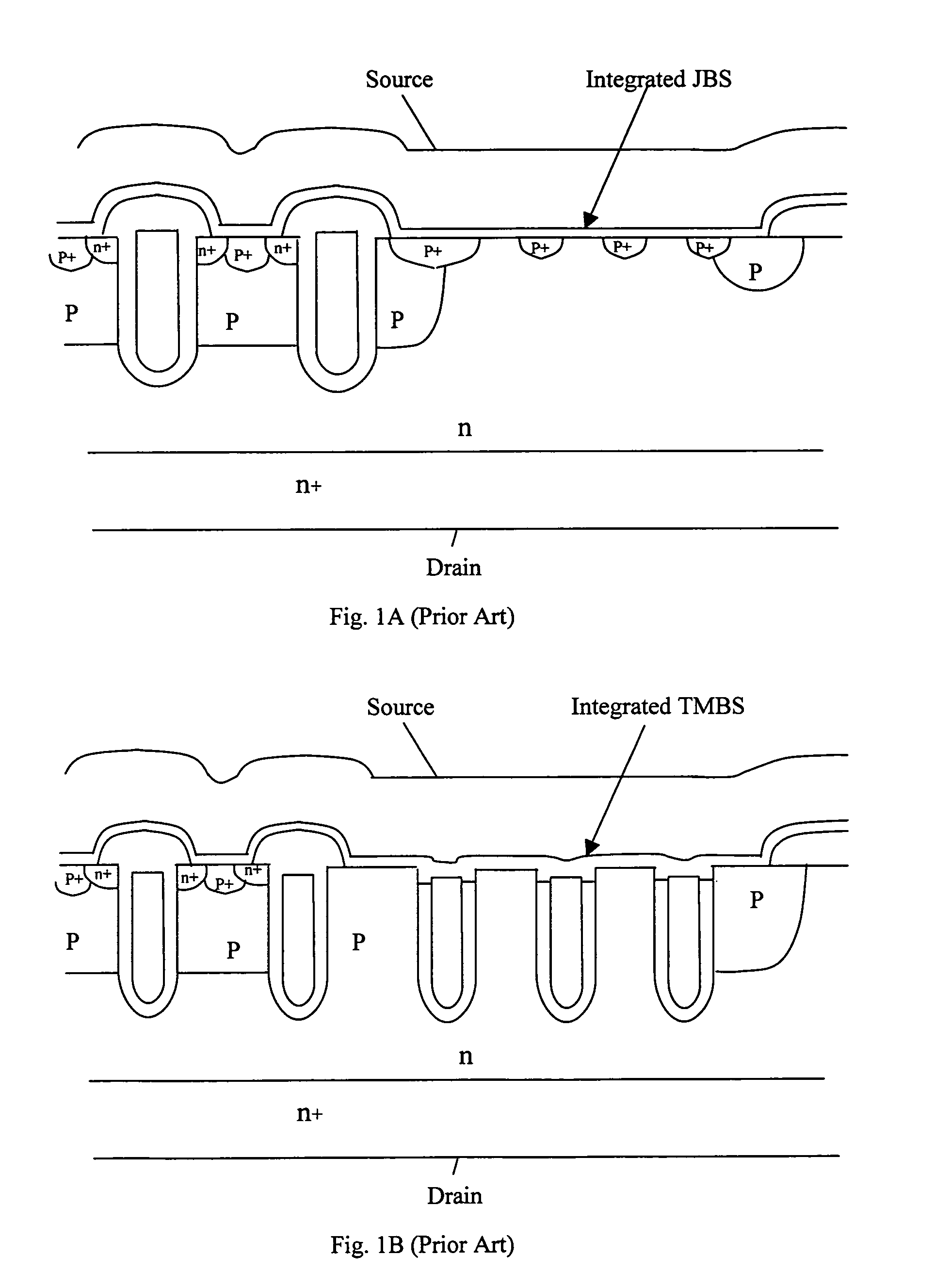Shielded gate trench (SGT) MOSFET cells implemented with a schottky source contact
a source contact and shielded gate technology, applied in the direction of semiconductor devices, diodes, electrical apparatus, etc., can solve the problems of increasing series resistance, increasing the resistance of devices, and reducing the on resistance of devices, so as to improve the area efficiency of the integrated schottky, improve the device performance, and improve the switching performance.
- Summary
- Abstract
- Description
- Claims
- Application Information
AI Technical Summary
Benefits of technology
Problems solved by technology
Method used
Image
Examples
Embodiment Construction
[0028]Referring to FIGS. 3A to 3D for a top view and three cross sectional views respectively of a trenched MOSFET device 100 of this invention. As shown in FIG. 3B, the trenched MOSFET device 100 is supported on a substrate 105 formed with an epitaxial layer 110. The trenched MOSFET device 100 includes a shielded gate trench (SGT) structure. The SGT structure includes a bottom shielding electrode 130 insulated from and disposed below a trenched gate 150. The bottom SGT structure 130 filled with a polysilicon therein is provided to shield the trenched gate 150 from the drain disposed below the trench bottom. The bottom SGT structure 130 is insulated from the drain region by a dielectric layer 113. An insulation layer 120 separates the bottom shielding electrode 130 from the trenched gate 150. The trenched gate 150 includes polysilicon filling in a trench surrounded with a gate insulation layer 155 covering the trenched walls. A body region 160 that is doped with a dopant of second c...
PUM
 Login to View More
Login to View More Abstract
Description
Claims
Application Information
 Login to View More
Login to View More - R&D
- Intellectual Property
- Life Sciences
- Materials
- Tech Scout
- Unparalleled Data Quality
- Higher Quality Content
- 60% Fewer Hallucinations
Browse by: Latest US Patents, China's latest patents, Technical Efficacy Thesaurus, Application Domain, Technology Topic, Popular Technical Reports.
© 2025 PatSnap. All rights reserved.Legal|Privacy policy|Modern Slavery Act Transparency Statement|Sitemap|About US| Contact US: help@patsnap.com



